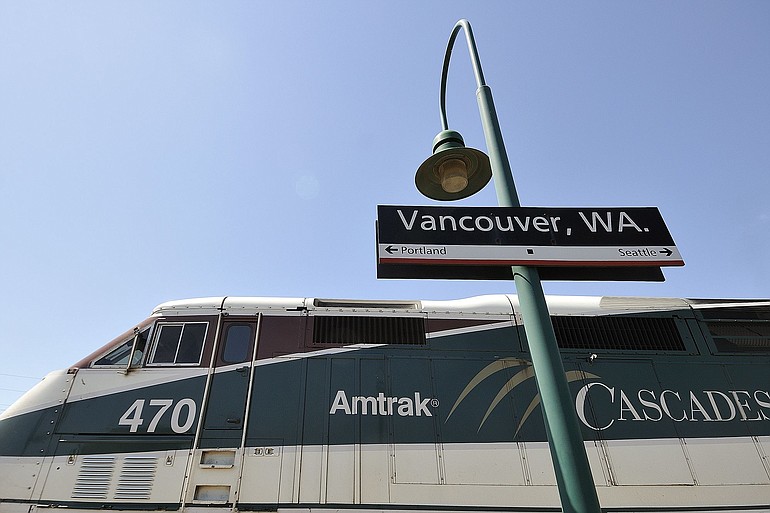In January of 2010, local rail advocates rejoiced at learning Washington had been awarded $590 million in federal economic stimulus funding for high-speed rail.
However, the money never actually materialized until this week.
A budget showdown 2,800 miles away on Capitol Hill may have played a role in freeing up the dollars that had been held up for more than a year.
The Federal Railroad Administration wanted assurances that, by spending federal money on a privately owned railroad, the improvements would meet the Obama administration’s goal of enhancing passenger service over the long term. The Washington Department of Transportation worked month after month trying to forge an agreement between the FRA, Amtrak and the owner of the rail line running along the spine of western Washington: BNSF Railway.
Negotiations dragged on for more than a year.
Then, the new Republican majority in the U.S. House of Representatives took office in January promising to follow through on campaign commitments to restrain federal spending. Rather than waiting for next year’s budget, the new majority pushed for deep cuts in the federal budget right now.
Billions of dollars that had been awarded but not yet formally “obligated” were suddenly on the chopping block.
“Common sense would tell us it was putting some pressure on everybody,” said Scott Witt, rail and marine director for the state DOT.
Following a final two days of final negotiations last Thursday and Friday, Witt was the state official who electronically accepted the $590 million award. The final click of the mouse came in his Olympia office at 10:04 p.m. on Friday.
“It was a nice feeling,” he said.
FRA spokesman Rob Kulat said the key federal administrator signed the grant agreement on Saturday, and the money was finally, officially obligated on the next day of business on Monday.
Now, no matter what happens on Capitol Hill, Washington has the $590 million.
Another $161 million, awarded to Washington after newly elected governors in Wisconsin and Ohio turned it down, remains on the congressional chopping block. No decisions have been made on specific cuts at this point, however.
In the meantime, work will continue on a $140 million rail bypass project under way in Vancouver.
That project, primarily funded by the state, will tap $29.1 million in federal funding.
That project will add a new set of bypass tracks running east of the BNSF main line between downtown Vancouver and the Fruit Valley Road overpass.
The bypass tracks, along with a slew of other improvements planned by the city and the Port of Vancouver, ultimately will free up space to accommodate projected increases in freight traffic while improving the speed and on-time reliability of passenger trains.
Statewide, a service outcome agreement between BNSF, the DOT and Amtrak spells out specific outcomes of the $590 million federal investment.
The overall project will trim 10 minutes from the current 3½-hour trip between Seattle and Portland, boost the on-time reliability of passenger trains to 88 percent, and add two additional round-trips to the four currently operating between the two cities.
Trains are currently on time 66 percent of the time, according to the DOT.
The improvements should be finished in 2017.
The obligations to maintain service outcomes will remain in place for 20 years, meaning Amtrak trains can’t be delayed by congestion caused by faster-than-expected growth in BNSF freight service.
According to the DOT, ridership on the Cascades service increased 10 percent between 2009 and 2010. Since the service began in 1994, annual ridership has increased from 100,000 to 840,000 last year.
European-style bullet trains traveling at up to 250 mph are likely to occur only on segregated rail lines constructed on entirely new corridors, currently envisioned in Florida and California. In the Pacific Northwest, Witt said, transportation officials hope to boost maximum passenger speeds to 90 mph. Trains currently travel no faster than 79 mph on the corridor.
That will mainly happen through incremental steps such as straightening track, cutting back the number of grade crossings and reducing freight congestion with new siding.
Erik Robinson: 360-735-4551, or erik.robinson@columbian.com.



